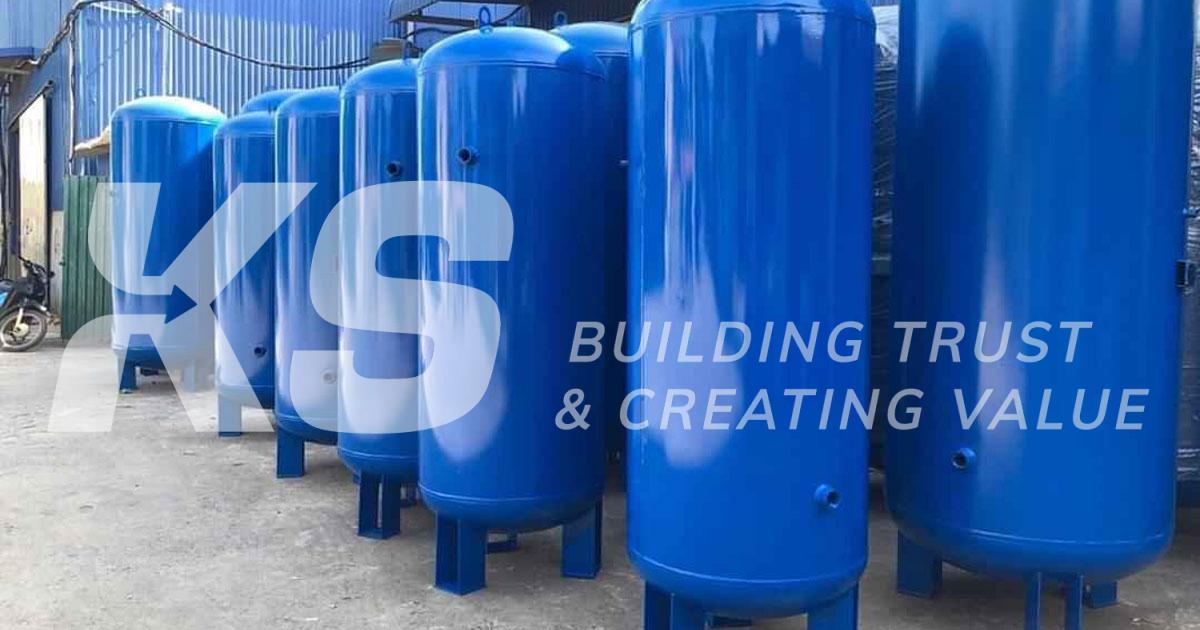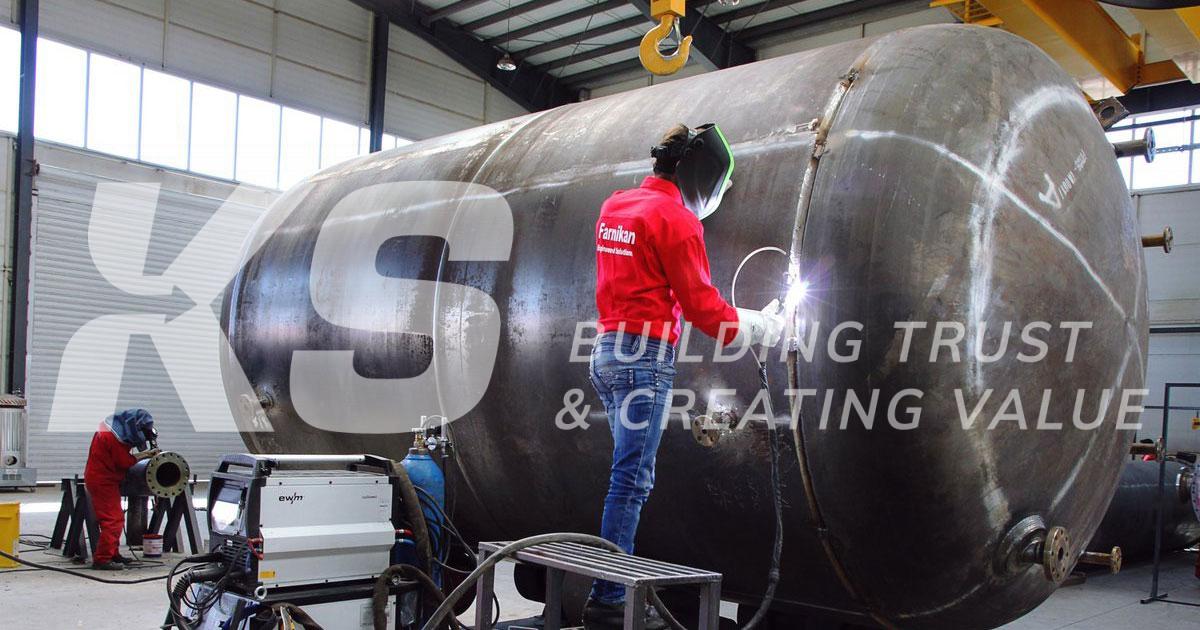
Learn about pressure vessels
Pressure vessel, also known as accumulator, is a pressure-containing device with a volume of gas or water used to regulate energy, through pressure and working quality for hydraulic transmission systems, systems. pneumatic, hydraulic system. Pressure vessels are used for many different purposes but are still based on the common principle: to store pressure and use when needed.

Pressure vessels have many different functions, namely:
– Stabilizes hydraulic system pressure, helps increase life and protects the pump from technical problems, possible breakdowns, minimizes the occurrence of hydraulic shock when disconnecting the load.
– Regulates energy through the pressure and flow of the fluid.
– As the source of supply and guarantee for the operation of the water pump system of the hydraulic system.
– Store hydraulic energy and create a balance between the load of the system and the force generated.
– In case the pump works poorly, lower than the standard, the accumulator will supplement the leak and the flow of the liquid through.
– Reduces the amount of foam generated by the pump, which helps to prevent hydraulic shock, reduce vibration and increase the life of the pump.
What is the structure of the pressure vessel?
What is pressure vessel construction? Pressure vessel is composed of 2 parts shell and core:
– Shell: Steel or stainless steel SS304-SS316. Withstands very high pressure.
– The core of the flask: consists of 2 basic parts:
+ Part 1 rubber coated (EPDM membrane) will contain hydraulic oil when operating in conjunction with the hydraulic oil inlet – out door.
+ Part 2 is the surrounding part containing nitrogen gas with a certain pressure.
Pressure test principle of pressure vessel:
The medium commonly used in pressure testing is water. Gas termites are only allowed to be used in very special cases and there must be safety measures to ensure that no serious problems occur during implementation.
– Pressure testing is only performed when there is doubt about the quality of pressure welds that cannot be evaluated by other methods or after the pressure vessel has been renovated.
– The test pressure is 1.5 times the maximum allowable working pressure. The time to maintain the test pressure is not less than 5 minutes. The wall temperature of the device and the medium does not exceed 50°C (120°F)
– If the pressure vessel is working with normal refrigerant, when the pressure drop does not exceed 10%, it is not necessary to test hermetically.

What information should be provided when buying a pressure vessel:
The capacity (volume) of the container you need (eg tank V = 1m3, V= 2000 liters…) Working medium: compressed air, oil… Working pressure you need
Causes of pressure vessel explosion:
– Due to the uninformed user using the tank above the specified pressure
– Using poor quality manufacturing materials, unsecured valve and meter system;
What to do to prevent explosion of pressure vessels?
– Read carefully the operating instructions, use the tank for the right purpose, the pressure when making
– Periodic maintenance and repair to ensure the safe operation of the pressure vessel
– Choose a reputable manufacturer and company to protect yourself and those around you.
KS – Boiler specializes in manufacturing, installing and maintaining industrial boilers:
Fanpage Facebook: https://www.facebook.com/ksboilercompany
Hotline: 1900 055 595
Website: https://ks-boiler.com
Office address: No. 9A, Street 73, Tan Quy Dong Residential Area, Tan Phong Ward, District 7, HCM.

